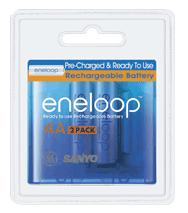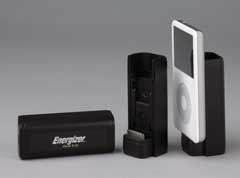|
PORTABLE " GREEN" POWER
by Shepard Gorman
Most
college students today grew up in a multimedia world in which letters
and numbers have always been animated. They sang and danced like the
sponsored features on Sesame Street. While this is fine educationally,
it does place a burden on the instructor to have their own multimedia
act
together! One of the best means to
ensure a giant flop is to run out of power. Modern presentation devices
used in college classrooms almost invariably depend on battery power.
Suffice it to say that if you have not experienced dead batteries in the
remote control of the projector, in the main battery of the laptop or
the built in, rechargeable, IPod batteries, you probably haven't had to
do the apology tap dance before starting a class. While the old “It
worked in my office” opener is cute, it’s been done before. We all
know that double checking these things prior to presentation works best,
but the insurance of spare batteries is always in order.
.Disposable batteries are convenient and initially
inexpensive, but they are hardly environmentally friendly. Rechargeable
batteries, while more eco conscious and cheaper overall, have the
significant
 drawback
of being "dead" and needing charging right out of the package. Sanyo's
Eneloop batteries have overcome that. By radically changing the
chemistry of their rechargeables, they are able to ship them
ready-to-go, like disposables and still remain reusable. The author,
always skeptical of advertising claims until they are tested, put
Eneloop batteries in two sizes into service almost a year ago. They not
only lived up to the claim of having about 80% of their charge retained
for very long storage periods and having very long use time, but they
recharged quickly as well. Scratch one for skepticism. drawback
of being "dead" and needing charging right out of the package. Sanyo's
Eneloop batteries have overcome that. By radically changing the
chemistry of their rechargeables, they are able to ship them
ready-to-go, like disposables and still remain reusable. The author,
always skeptical of advertising claims until they are tested, put
Eneloop batteries in two sizes into service almost a year ago. They not
only lived up to the claim of having about 80% of their charge retained
for very long storage periods and having very long use time, but they
recharged quickly as well. Scratch one for skepticism.
A favorite product to use these batteries in is one for which it is not
initially recommended. If you need to simply replace an AA or AAA
battery, you can of course do that directly. Until Energizer came along
with its widely available Energi To Go products, built-in rechargeable
batteries would have been more of a problem to repower away from a wall
socket. Now, however, you can walk
into virtually any office supply or drugstore and
get a little egg-like Energi To Go charger with two lithium disposable
batteries for about $20 that will have the proper power connectors for
most cell phones or mini-USB devices like MP3 players or
PDAs. This little device will free you from wall outlets and let you
repower many
electronic devices that have internal batteries.

My only real quibble with Energizer is that while they initially pack up
to 3 adapters for a given family of phones ( e.g. the Motorola package
on the left), they don’t sell new connectors individually,. That forces
the purchase of new charger to get a connector for a different brand of
phone or type of device.
Energizer recommends that you use their own lithium disposable
batteries with Energi To Go because of their high current output, which
allows the almost immediate use and recharging of the attached devices,
but it can be used with other types of batteries. A little
experimentation showed that lithium batteries charged my dead PDA in
about 3 hours, while alkaline cells did it in about 3.5 hours and the
Sanyo Enerloop batteries in about 4 hours. Cell phones usually charge
even faster, All kinds of batteries in the Energi To Go allowed the
PDA or cell phone to be used in less than 2 minutes. While the original
lithium battery configuration worked best, it seems that the
rechargeables have more than acceptable performance for an eco-friendly,
"greener" product. Unless you get a “charge” out of doing the time-step
waiting to begin a lecture, give this combination a try!
 P.S.
Here’s the new Energi To Go, dedicated to the iPod only, with a smaller
form factor and no cables! P.S.
Here’s the new Energi To Go, dedicated to the iPod only, with a smaller
form factor and no cables!
It will take the same rechargeable or disposable batteries as the other
Energi chargers
|
